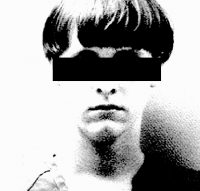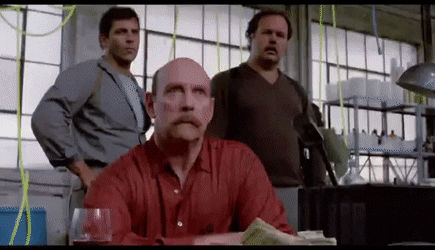The Tragedy of Images
Ceci est un pistoIet. llustration by J. Brooks Robinson
Guns, Hollywood, and the mystique of violence
In 1971, the fetishizing of firearms in American cinema entered a provocative new phase when Clint Eastwood unholstered his Smith & Wesson Model 29, pointed its sleek, 8⅜-inch black-steel barrel at Albert Popwell’s head and inquired as to the gentleman’s sense of good fortune.
Guns had been lethally cool accoutrements in Westerns and gangster films for decades, but the foregrounding of a pistol in Don Siegel’s Dirty Harry was altogether new. It was practically an advertisement: if you wanted to feel like Harry Callahan — and given that crime rates in the United States had risen sharply over the previous decade, such Miranda-flouting swagger held a certain appeal — you now knew precisely what to ask for at the local gun shop.
The country didn’t go gun crazy overnight, but by the time the 1980s rolled around depictions of firearms in film and other media were drastically different, thanks in large part to the extrajudicial adventures of anti-hero everymen played by Eastwood, Charles Bronson (Paul Kersey in Death Wish), Robert Devane (Charles Rane in Rolling Thunder), and Robert De Niro (Travis Bickle in Taxi Driver).
With each passing year, the weaponry became more sophisticated and absurdly lethal, while the on-screen deaths got gorier and less meaningful. Where audiences once gasped in horror at the realistic depiction of a bank teller being shot point-blank in 1967’s Bonnie and Clyde, they’d now hoot and holler for the flesh-rending carnage of 1985’s Rambo: First Blood Part II.
Coming of age as a movie buff in the Reagan era, I was fascinated with firearms. America was in the midst of a macho, militaristic renaissance, and the gun industry was rapidly developing sleek new pistols and assault rifles that could discharge bullets with alarming efficacy.
This cool-looking weaponry — Uzis, Ingrams, AKs, etc. — found its way into the major action extravaganzas of the decade, as well as the Mack Bolan series of books written by Don Pendleton. The latter was particularly helpful in expanding my gun vocabulary: Pendleton described Bolan’s arsenal in lustful detail, and included detailed diagrams of firearms at the end of each novel.
Consequently, I developed into a pint-sized gun encyclopedia. I would gleefully identify each piece of hardware in junk-fests like James Glickenhaus’s The Soldier or Ian Sharp’s The Final Option, and thrill at the sight of them in operation.
My parents had zero interest in firearms and forbade ownership of an air rifle, so guns were fantastical instruments of violence to me — as distant and unreal as Lee Horsley’s tri-blade sword in The Sword and the Sorcerer.
The greatest gun fantasy of them all was John Milius’s Red Dawn, in which a bunch of rural American high school kids wage guerilla warfare against an occupying Russian army. I saw the movie at least three times theatrically, and even though most of our heroes are dead by the end of the movie, dreamed of the day the Russkies would parachute into my elementary school playground so I could take up arms.
These reveries were ludicrous for three reasons: a) any conflict between the two global superpowers in 1984 would’ve resulted in a full-scale nuclear war, b) I’d never held an actual, functioning firearm, much less shot one, and c) the notion of a school getting shot up by bad people with automatic weapons was patently absurd. People didn’t do such things.
Until they did.
At first, this was unthinkable, then it became routine. Now kids from kindergarten to high school participate in active shooter drills once or twice a year because now any chump with a chip on his shoulder (it’s almost always a male) can amass the type of small arsenal that used to make Rambo, Commando’s John Matrix, or Mack Bolan seem exotic.
What happens when one of these cretins uses their weapons not to avenge their loved ones or defend the innocent, but to terrorize the vulnerable (i.e. the unarmed)? There are no John Wicks to blast these monsters out of existence because life doesn’t work that way.

The gung-ho righteousness of the 1980s mutated into a nativist, authoritarian nightmare. Films like Costa-Govras’s Betrayal and John Frankenheimer’s Dead Bang, both of which warned against resurgent white nationalism in America, have proved more prescient than the jingoistic inanity of Red Dawn or the means-justify-the-ends panic of Dirty Harry. Eastwood’s iconic fetishizing of a long-barreled .44 Magnum — written by gun-nut Milius, whose pivotal work on the screenplay was contingent on the delivery of a bespoke Purdey shotgun — pushed us backwards during a faltering moment in the antiwar and Civil Rights movements.
Eastwood and that pistol were and still are symbols of defiance for frightened white men, a means to take back “their” streets. By the 80s, this braggadocio had extended to the rest of the world; Hollywood and its gun-toting heroes put our enemies on notice that Vietnam was the last war we were ever going to lose. It was an entirely unearned confidence, but even into the 1990s action films reinforced this foolhardy notion that there was nothing an American with a gun couldn’t do.
As I grew older, I maintained a distant fascination with firearms. I went shooting a couple of times with a college friend, and discovered as most do, that it’s a literal and figurative kick to squeeze that trigger.
In 1994, while directing a play that required the discharge of a pistol, I borrowed a “Saturday night special” from a friend and for three months blithely carried it around — unloaded, concealed, and wholly unlicensed — in my backpack wherever I went. I felt like Undergrad Paul Kersey: slightly queasy but kind of cool. This remains my only brush with gun ownership.

Though I haven’t fallen out of love with the bullet-whizzing action films of my youth, I can’t help but feel uncomfortable with modern Hollywood films — particularly the John Wick series — taking gun fetishism to absurd new heights. Maybe it’s because open-carry laws in certain states mean the kinds of weapons you would only see in fantastical action movies set in war-torn locales can be brandished at Walmart and Starbucks. Maybe it’s because the only purpose of a gun is to take life; its presence meant to intimidate. Maybe the mystique around Hollywood depictions of violence hasn’t faded, it’s only become less novel because its symbols are just another part of our daily lives, bodycount and all.
Hey, while you're here ...
We wanted you to know that The End Run is published by Endcrawl.com.
Endcrawl is that thing everybody uses to make their end credits. Productions like Moonlight, Hereditary, Tiger King, Hamilton—and 1,000s of others.
If you're a filmmaker with a funded project, you can request a demo project right here.
Ephemera and the Public Domain
Guns, Hollywood, and the mystique of violence.

